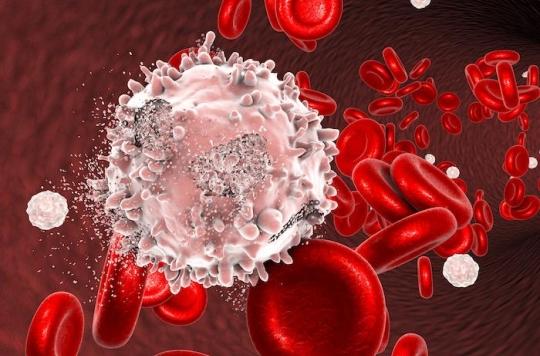The rapid screening of the drug response on the stem cells of patients suffering from acute myeloid leukemia is a major prognostic factor for relapses and can make it possible to individualize the treatment of the patient.

In acute myeloid leukemia, direct analysis of the sensitivity of leukemic stem cells to drugs could explain very early on why certain treatments do not work and why early promising therapeutic results are not maintained.
In this high-throughput genetic sequencing study, the researchers showed that the genes expressed in leukemic stem cells made it possible to know the resistance or sensitivity to treatments, and that these genes are very different from those expressed by the blasts (the cells currently targeted by chemotherapies). The examination also objectifies differences in sensitivity profile between patients.
It therefore becomes possible to know from the start of the disease which drugs will target both the diseased stem cells and the blasts and to individualize the treatment, in order to treat the disease radically and prevent the patients from relapsing. Those results were presented at the 60th Annual Meeting of the American Society of Hematology in San Diego.
A severe form of leukemia
Acute myeloid leukemia (or AML) is a severe form of leukemia affecting certain hematopoietic cells (cells responsible for forming blood elements). In this disease, certain cells, early precursors of the bone marrow, which generally develop into white blood cells do not mature correctly.
These cells remain stuck as primitive cells, called “blasts”, unable to further differentiate and evolve into normal blood cells. These can accumulate and suffocate the bone marrow, causing a decrease in white blood cells, which reduces the ability to fight infections, as well as a decrease in platelets, which puts you at risk of bleeding.
Different sensitivities depending on the cells
The researchers found that the genetic drug susceptibility profiles of acute myeloid leukemia stem cells and blasts diverged, and that these profiles also differed from patient to patient.
Thus, it appears that the blasts most often respond to the drugs most commonly used to treat the sick, which explains the initial regression of the disease, but none of these drugs is effective against the stem cells of leukemia, which which perfectly explains why the disease relapses, even after elimination of the blasts.
The researchers found 12 drugs from eight classes that appeared to preferentially target leukemia stem cells over blasts. Many of them are most often not used in patients with this type of blood cancer, which opens up immediate prospects for improving treatment.
A two-pronged study
This study examined drug response in stem cells and blasts taken from patients with acute myeloid leukemia. The information was analyzed using high-throughput genetic sequencing, a method for quickly evaluating and testing genes in many samples.
In an in vitro study, the researchers then compared the drug susceptibility of blast and stem cell populations taken from the same six patients. In doing so, they tested a personalized panel of drugs, targeted agents and drug combinations on the cells, and performed genetic analyzes for 194 mutations. The panel included both FDA-approved drugs and investigational drugs.
A major breakthrough
The differentiated characteristics of drug sensitivity observed by high-throughput genetic sequencing in stem cells and blasts of acute myeloid leukemia give scientists hope that individualized therapeutic approaches could be developed against acute myeloid leukemia. In perspective, it is the improvement of treatment results for people with this serious form of blood cancer.
.













